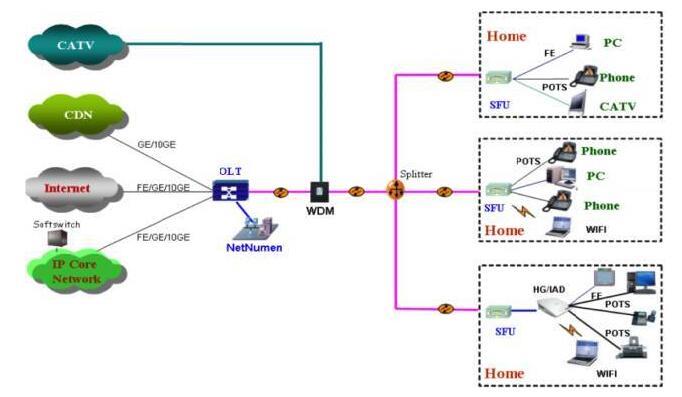FTTH, or Fiber To The Home, refers to fiber optic cable that replaces the standard copper wire of the local Telco. Many people prefer it because it can carry high-speed broadband services integrating voice, data and video, and runs directly to the junction box at a home or building. For this reason, it is sometimes called Fiber To The Building, or FTTB.
Traditional copper telephone wires carry analog signals generated by telephone equipment, including fax machines. Analog technology is, by nature, a less precise signaling technology than digital technology. Though multiplexing has allowed digital signals to be transmitted across multiple channels over copper lines, fiber optic cable is superior for relaying these signals and allows for faster transfer rates and virtually unlimited bandwidth. This opens the door to better Internet speed, streaming video, and other demanding applications.
The Internet utilizes a backbone of fiber optic cables capable of delivering incredible bandwidth. This inherent ability makes it a prime source for advancing network technologies that can be brought to the home or business. Most subscribers, however, log on to this network through copper lines with limited capacity. This creates a bottleneck for advancing technologies that increasingly require greater bandwidth. FTTH bridges this gap.
Fiber optic cables are made of glass fiber that can carry data at speeds exceeding 2.5 gigabits per second (gbps). FTTH services commonly offer a fleet of plans with differing speeds that are price dependent. At the lower end of the scale, a service plan might offer speeds of 10 megabits per second (mbps), while typical DSL (Digital Subscriber Line) service running on existing copper lines is 1.5 mbps. A more expensive plan might offer data transfer speeds of over 100 mbps — that’s about 66 times faster than typical DSL.
FTTH is cost-prohibitive in many cases. Installing it can be expensive, and the monthly charge for broadband services thereafter can also be off-putting, though these figures vary widely. Expense is likely to drop with time as fiber becomes more common.
Because of the cost involved and the logistic difficulty in replacing existing copper lines in some neighborhoods, fiber optic cable is more often being installed in newly built communities as an added selling feature. Installing it raises the value of existing property.
FTTH can be installed as a point-to-point architecture, or as a passive optical network (PON). The former requires that the provider have an optical receiver for each customer in the field. PON utilizes a central transceiver and splitter to accommodate up to 32 clients. Optical electric converters, or OECs, are used to convert the signals to interface with copper wiring where necessary.
This technology differs from Fiber To The Curb (FTTC) in that FTTC does not run directly to the home or building. Instead it runs to the curb, and the last leg of wiring to individual buildings remains copper wire.


